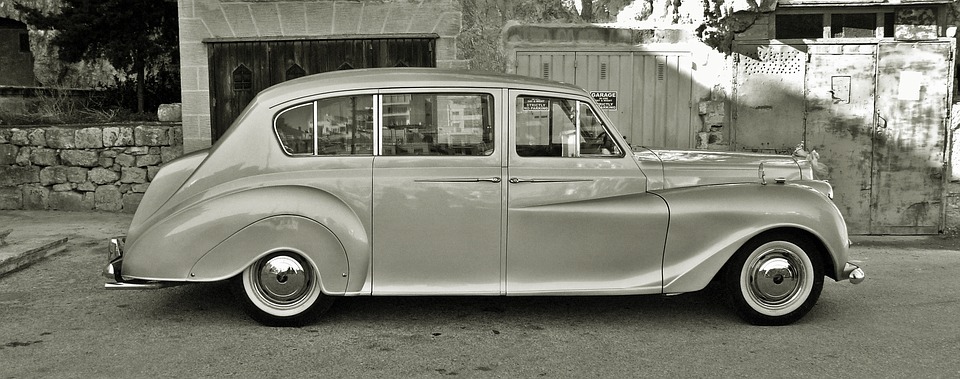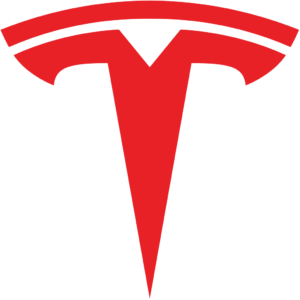Here’s a joke for today that will evolve toward widespread recognition as truth in ten years or less: “We must have been crazy to let humans drive cars!” Let’s consider Tesla’s Autopilot that became available in January 2017 and standard since April 2019, and the ever-increasing sophistication of Tesla’s Autopilot and growing Full Self-Driving (FSD) capability.
In the fourth quarter of 2019, drivers in Teslas driving with Tesla’s Autopilot engaged were 6.4 times safer than the average US driver using whatever driving assist they desired that was available to them ranging from adaptive cruise control to none at all. The Tesla Autopilot group above registered one accident for every 3,070,000 miles driven according to Tesla’s over-the-air (OTA) vehicle monitoring data. The driver of a non-Tesla automobile averages a crash every 479,000 miles according to the NHTSA’s data. Surprised? Stunned?
For those Tesla drivers driving without Autopilot, but with Tesla’s “active safety features” engaged, there was an accident every 2,100,000 million miles driven. For Tesla drivers with neither Tesla’s Autopilot nor its active safety features engaged, there was an accident every 1,640,000 miles driven. Source: Tesla.com, 4/7/20, “Accident Data Report Q4 2019”.
Separately, Gali Russell in his Hyperchange YouTube video “Tesla Leads All Automakers in Vehicle Safety”, dated 11/11/19, cited an NHTSA study of its top 50 vehicles tested since 2011 and the probability of being injured in each make and model vehicle. Tesla Models 3, S, and X scored the highest (safest) in this evaluation, coming in at approximately 5.75%, 6.4%, and 6.6% chance of injury, respectively. Three other vehicles came in below 7% but above Tesla, and the other 44 vehicles all scored from 7% to 8.3%. Thus, you are about 39% more likely to be injured in an 8% vehicle than in a Tesla Model 3.
Even though Teslas are generally safer than other makes and models of autos, we can note from Tesla’s accident data above that even in a Tesla, it’s almost twice as safe to drive using Autopilot frequently, in contrast to using neither Tesla’s Autopilot nor its active safety features. Additionally, even with no safety features engaged, based on accidents per miles driven, Tesla’s are 3.4 times safer than other makes of vehicles.
It is obvious from this hard data that there are progressive benefits the more Tesla drivers use Autopilot and advance toward FSD. No one is saying that Tesla’s Autopilot is FSD-capable yet, but Tesla is sure homing in on that strategic goal. It seems that almost on a monthly basis more and more features and capabilities are added to Tesla’s Autopilot. And the more Teslas sold and on the road, the faster Tesla accumulates driving data from its customers, or more specifically, from its cars — anonymously.
According to a paper written by Lex Fridman, a post-doc researcher at MIT, entitled Tesla Vehicle Deliveries and Autopilot Mileage Statistics, (updated annually), Fridman estimated that by Jan 1, 2020, all Teslas sold to that date had accumulated 19.1 billion miles, with a total of 2.2 billion of those miles driven with Tesla’s Autopilot engaged. By the end of 2020, that number of Autopilot miles was projected to climb to 4.2 billion miles. [In my estimation, the COVID-19 pandemic may reduce that projected 2020 growth by roughly 50%, so that Tesla’s total Autopilot driving experience might be about 3.2 billion miles at the end of 2020.] Thus, Tesla is currently accumulating some 1 to 2 billion Autopilot miles annually, which will continue to increase exponentially as more and more Teslas are sold globally and driven. The more miles Teslas are driven under Autopilot, the smarter their neural network and software gets!
At this point it may be worthwhile to consider a broader picture. While few alive today can remember the dawn of the automobile age, books, newspapers, photos, and movies have captured the carnage that accompanied the introduction of the automobile in the US. Initially, most of our roads were dirt, not paved. Everyone had to learn to drive, in the days before decent handling and reliable cars, and long before things like automatic transmissions, power steering, power brakes (or even good brakes!). Cars crashed into other cars, into ditches and phone poles, into horses and cows, etc., either because of a mechanical breakdown or from various forms of driver error including beginners’ incompetence, distraction, speeding or reckless driving, falling asleep at the wheel, and/or inebriation. It was not pretty.
According to Wikipedia and the NHTSA, from 1899 through 1920, 76,353 people died in motor vehicle accidents, while the US population went from 76 to 106.5 million people. Interestingly, the fatalities per 100,000 population were 11.42 in 1920, and were 11.18 in 2018!
Soon roads improved, cars improved, and most people became accustomed to driving. Cars meant travel time saved, mobility and freedom! But on a darker note, by the turn of the 21st century, despite safety improvements such as seat belts, dual braking systems, and airbags, we as a society had long become inured to the fact that some 30,000 to 40,000 people died annually in US road accidents, with in excess of 2 million others injured or disabled.
Now we find ourselves at the dawn of the self-driving or autonomous driving age and the coming of “Robotaxis”. Tesla, as the leading pioneer in the computer-on-wheels electric vehicle-based FSD movement, takes a lot of negative flack when one of its vehicles is in a crash, particularly if it becomes known the Tesla was “on Autopilot”. In part this negative press is sponsored by traditional internal combustion engine (ICE) based auto companies, the oil and gas industry — whose worst nightmare is a world full of battery-powered vehicles, and the Tesla stock short sellers who want to make a fortune by driving Tesla into bankruptcy.
People feed on negative news without looking at the facts behind the lurid video clips and cable news sound bites. It seems we hear about every single Tesla crash (with or without Autopilot engaged), a relative few per year, but curiously little to nothing about the 40,000 “routine” car crash victims or the makes and models of the vehicles they were driving, or whether their cruise controls were engaged. Tesla becomes vilified, when in the majority of Tesla crashes, they have the video evidence to prove the crash was the fault of their Tesla driver or the other vehicles’ drivers. People forget that it is primarily Tesla leading efforts to make automobile travel safer and prevent vehicle accidents – lethal and otherwise — around the world.
Consider some information about the capabilities of the average human driver, compared to Tesla’s current state-of-the-art Autopilot system. BTW: note that roughly 50% of drivers are worse than average!
Human drivers have at best two cameras – their eyes, often with less than “perfect” human vision, with or without glasses or contact lenses. Humans have a slow gimballing motion – rotation of the head/eyes either side to side or up and down. Human eyes have a limited peripheral field, in any direction. Humans are often distracted when driving – driving on automatic while thinking of something else. How many times have you gone through a traffic light and afterward said to yourself: “Horrors, I don’t remember whether that light was green or red!” Moreover, parents might be distracted by dealing with their children in the car. Many drivers habitually chat on their cellphone or text while driving. Drivers’ ears are often busy listening to other car occupants, the radio, or worse, music or news from cellphones through headphones. Additionally, humans sometimes fall asleep while driving, and some even drive drunk or high. You get the point – at best, humans are error-prone.
Now consider just a few facts regarding Tesla’s latest standard-since-April-2019 “FSD” computer with the FSD software option and accompanying input devices that support Tesla’s richest Autopilot version. At a very minimum, the total system consists of:
- A GPS/mapping system
- Eight surround cameras on the car that give continual real-time 360-degree visibility
- 12 ultrasonic sensors that detect hard (i.e., another car) and soft (i.e., a dog) objects
- Forward facing radar with redundant wavelengths that sees through heavy rain, fog, or dust, and even “through” the vehicle in front of your vehicle
- Foot pedal and steering wheel angle sensors
- An inertial measurement network sensitive to “g” forces
- Wheel revolution per minute sensors
- Two redundant FSD computers that operate at 144 Trillion operations per second, and that can, in response to all the combined inputs from the above devices, make approximately 15 steering/acceleration/braking adjustments per second, performing one trillion calculations between each output command
- An artificial intelligence-based neural network that continually learns and refines its knowledge as it accumulates more data from its vehicle, and as Tesla accumulates more data from over a million of its cars being driven daily under all possible conditions, and provides regular over-the-air software upgrades to its in-car vehicle management systems
Tesla’s Autopilot system, in its current version “sees” in every direction simultaneously and on wavelengths that go far beyond human senses, integrates input from every sensor in real-time, and reacts orders of magnitude faster than any human could. Moreover, when Autopilot is engaged, it is always on and fully alert.
Assume it takes 0.8 seconds for an average human driving a vehicle to react to any sensory input. Tesla’s Autopilot system reacts in nanoseconds – billionths of a second. If we use 80 nanoseconds for the Autopilot response time (an eternity in Tesla’s computing system), then the FSD/Autopilot system reacts 10,000,000 times faster than a very responsive human! Who, or what vehicle management/driving system, would you rather have in command of your car?
And, Tesla is by no means done with its FSD capabilities, although it’s getting very close to having a system it feels confident is at least ten times better than the average human driver and that will pass any reasonable certification system devised by any global regulatory agency.
With FSD capabilities, autonomous vehicles will be able to take people anywhere they want to go with no human driver. By definition, when all vehicles are autonomous, there will be fewer accidents, no speeding and reckless driving incidents, no more red lights run, and less traffic jams. Insurance costs will go down as a result. People will not even have to own a car! That thought really has conventional internal combustion engine (ICE) powered car/pickup producers and insurance companies in a dither. Similarly, cities and towns that make a lot of money from vehicle moving and parking violations, and from renting parking spaces need to be thinking about how to replace that revenue.
Full self-driving and autonomous driving, the advent of so-called Robotaxis, will change our society and business infrastructure in immeasurable ways. Uniquely, Tesla is almost there – – other “competitors” are years behind. Hang on for your autonomous ride!
Your feedback in the form of comments or suggestions are welcome in the comment window. Thank you for following my blogs on this site and for participating in my blogging community.




